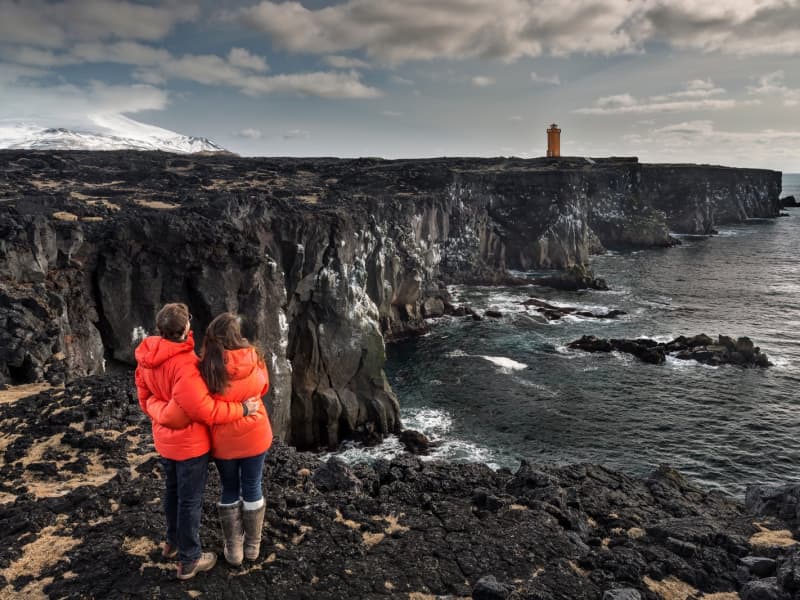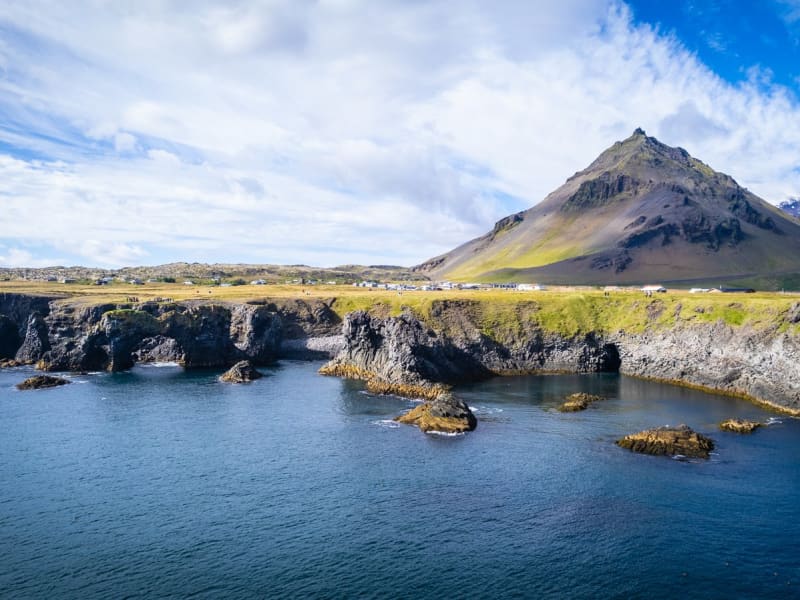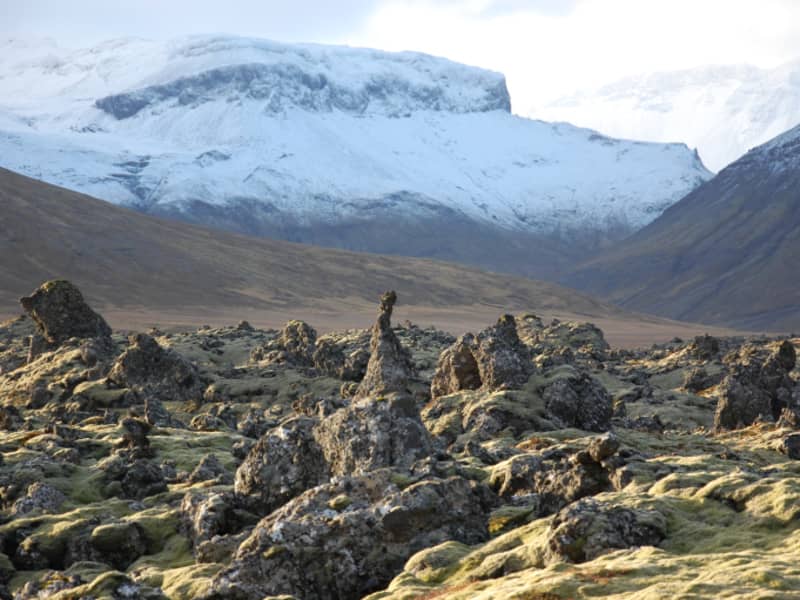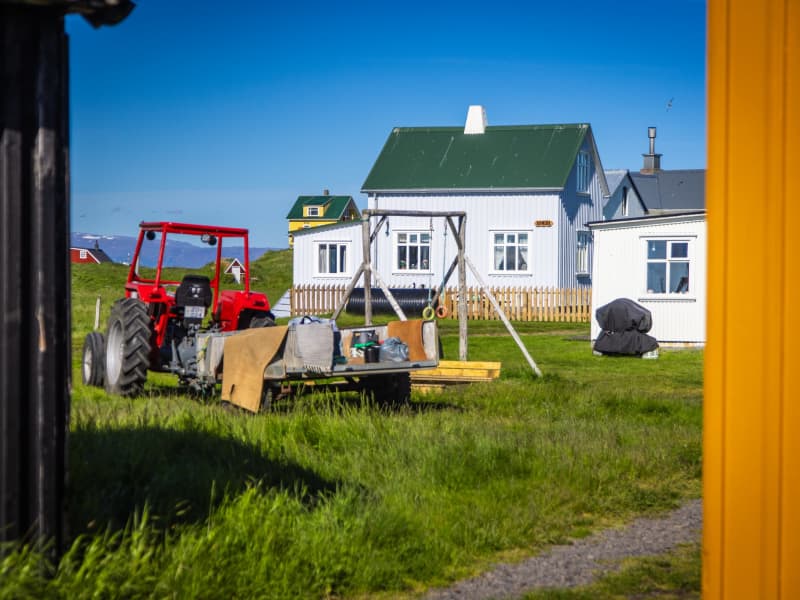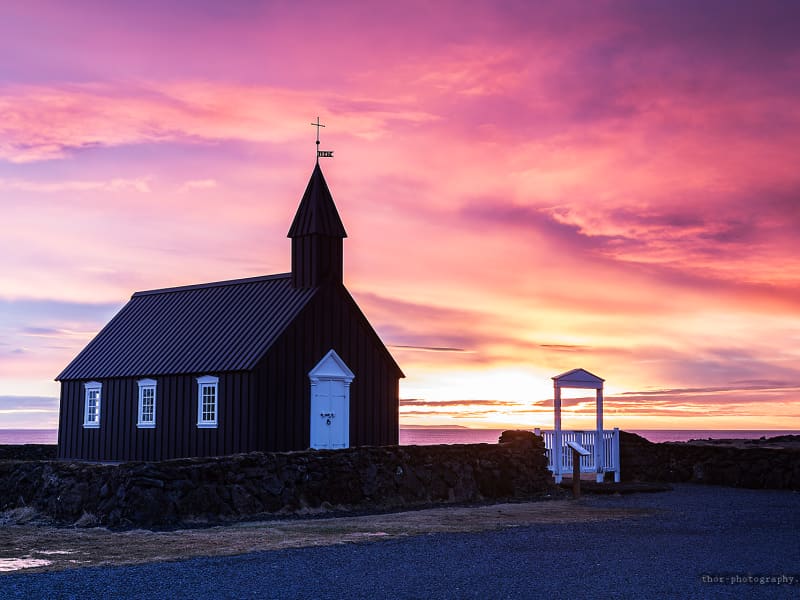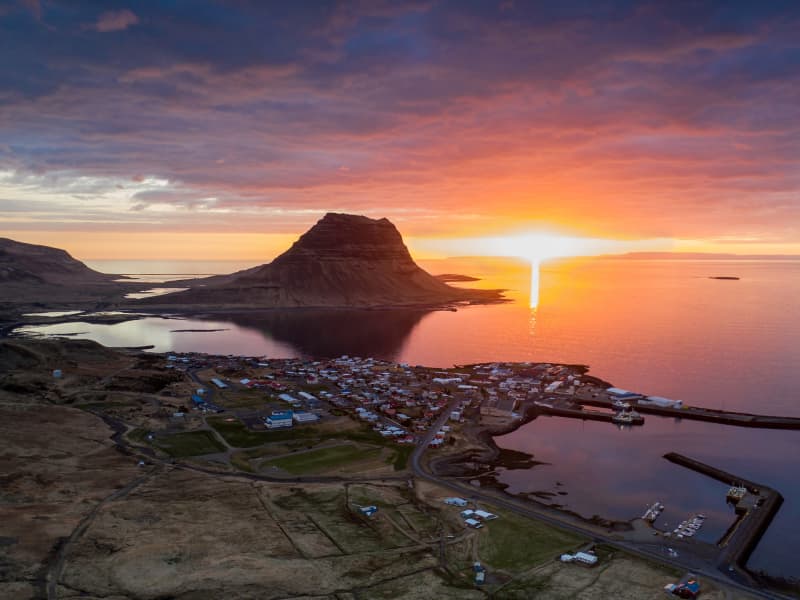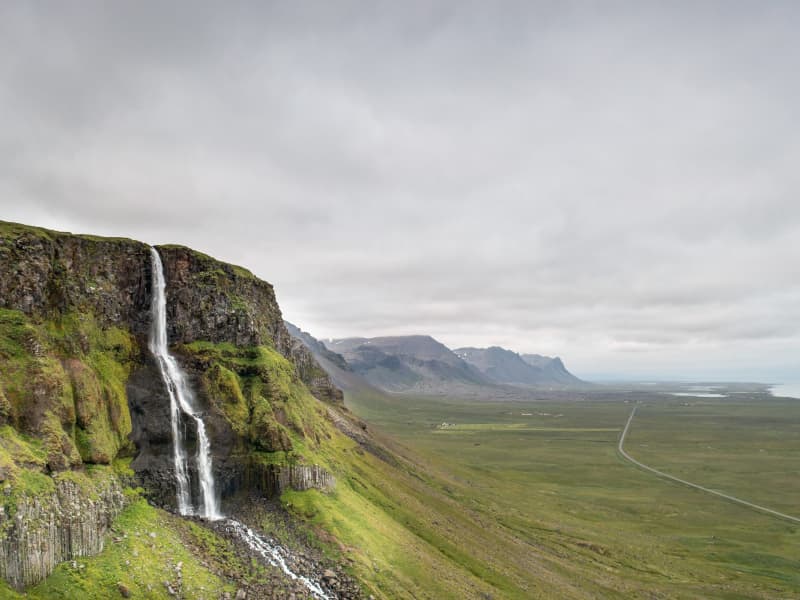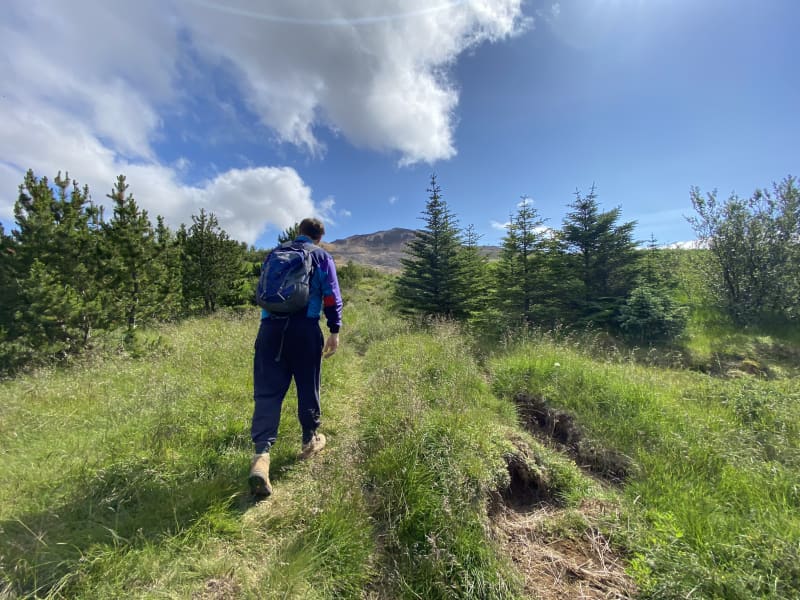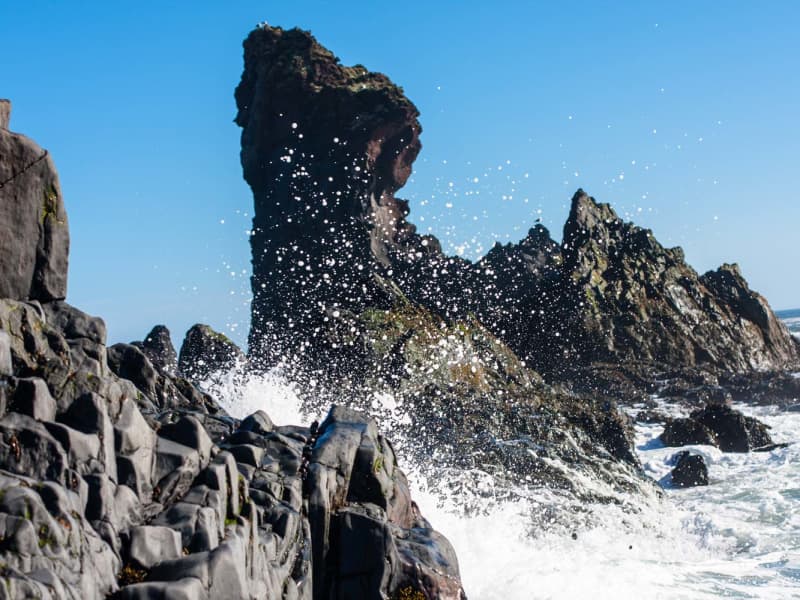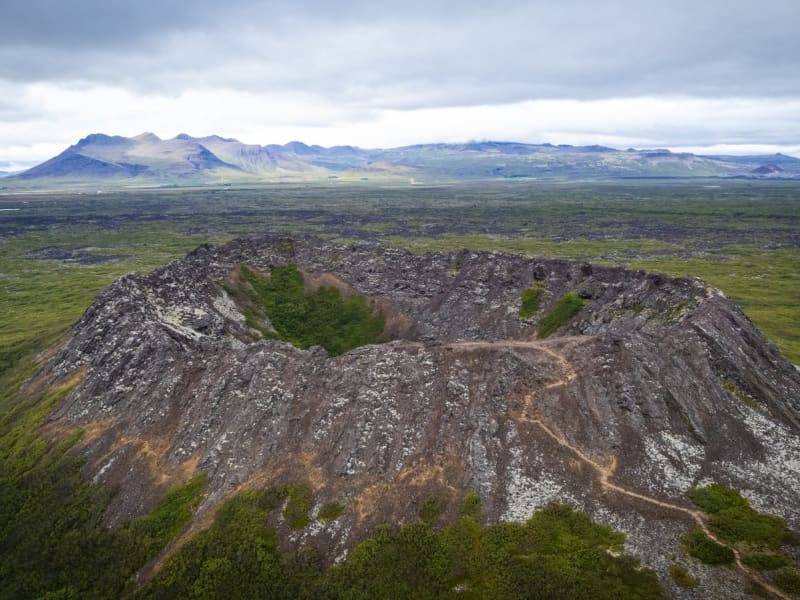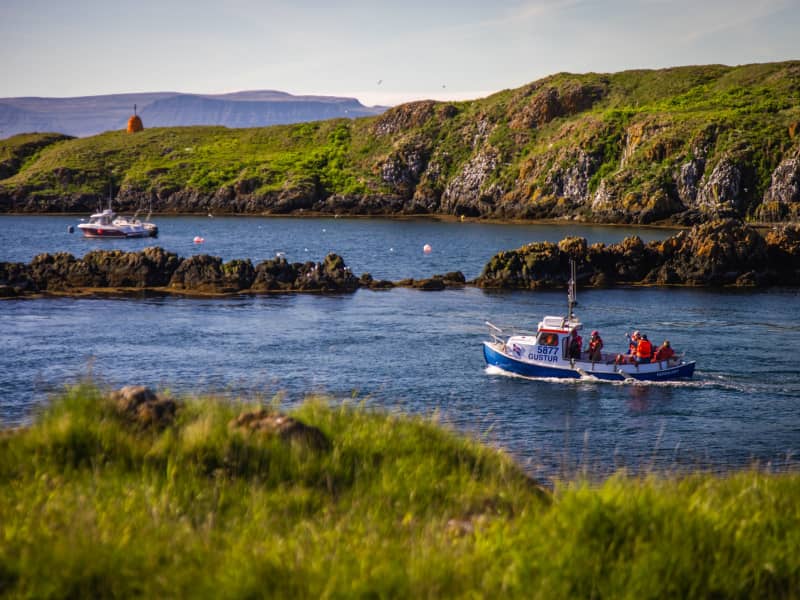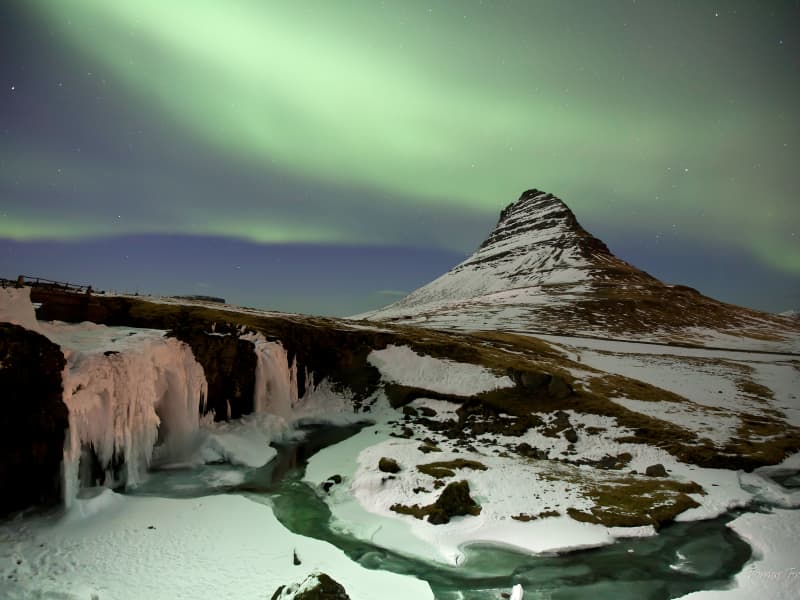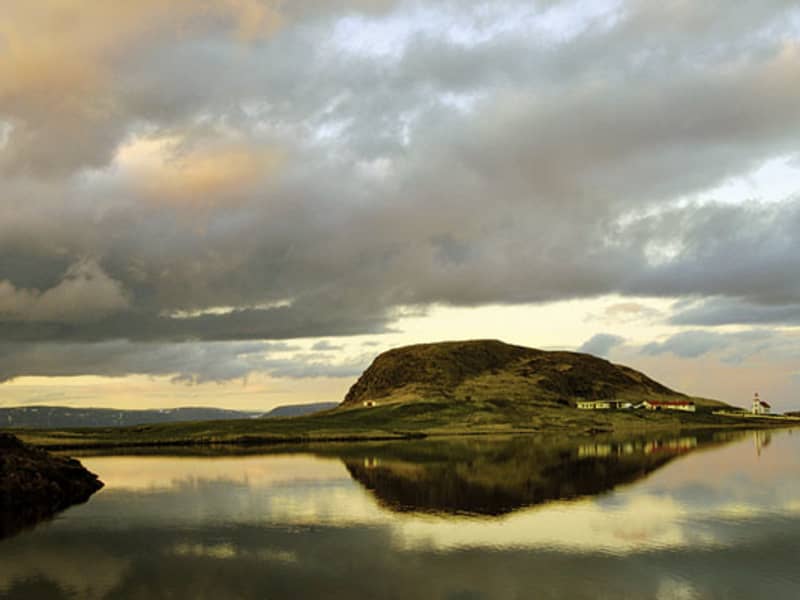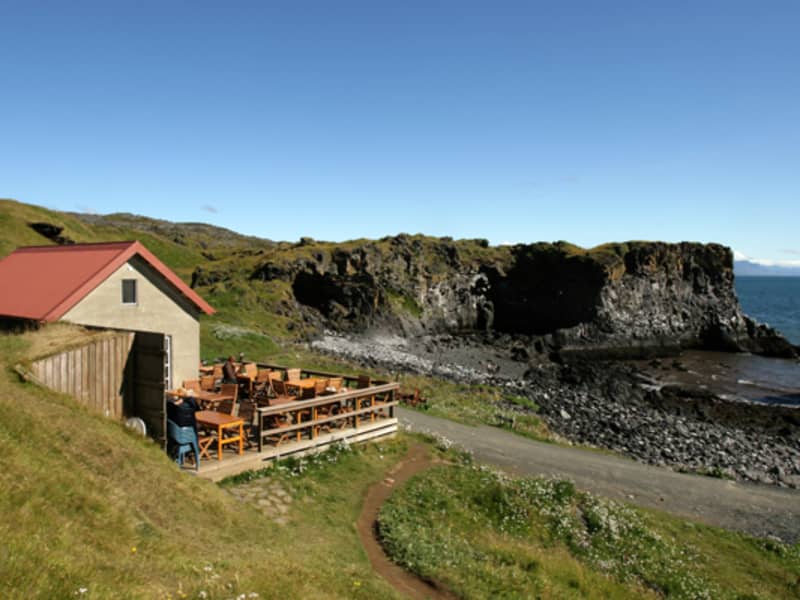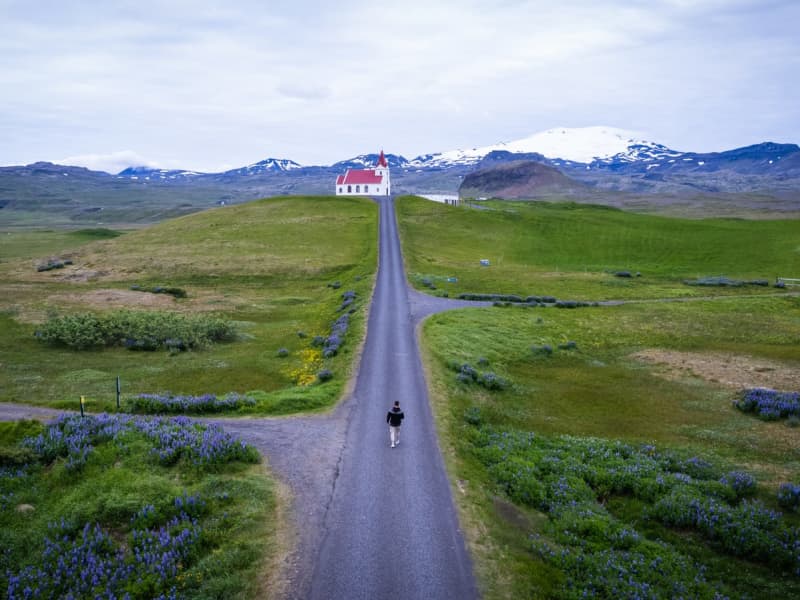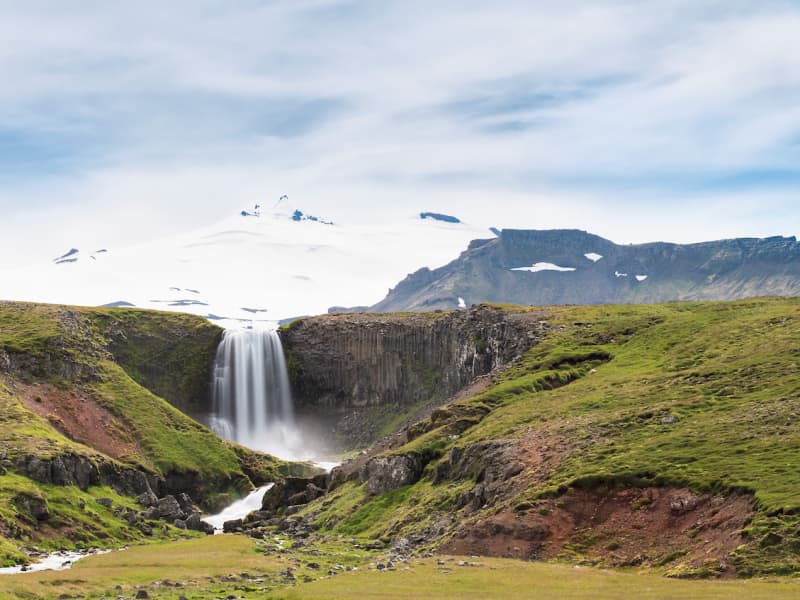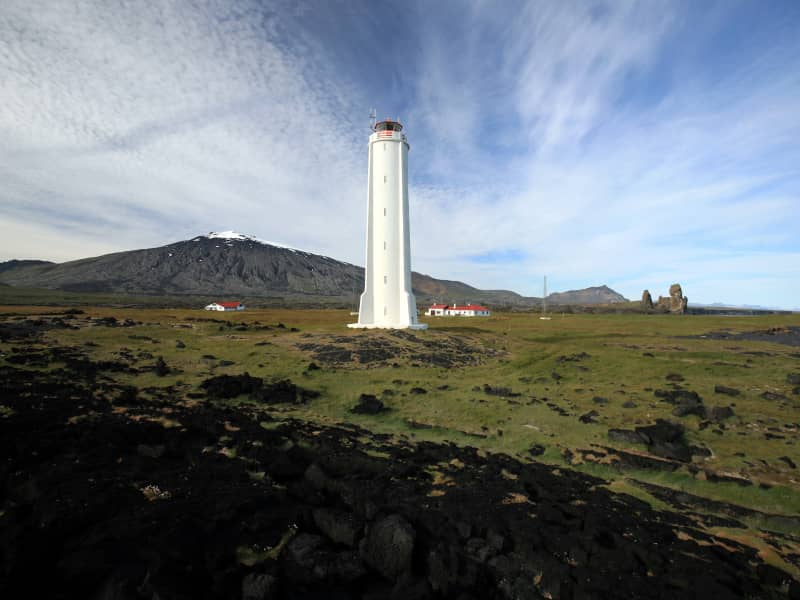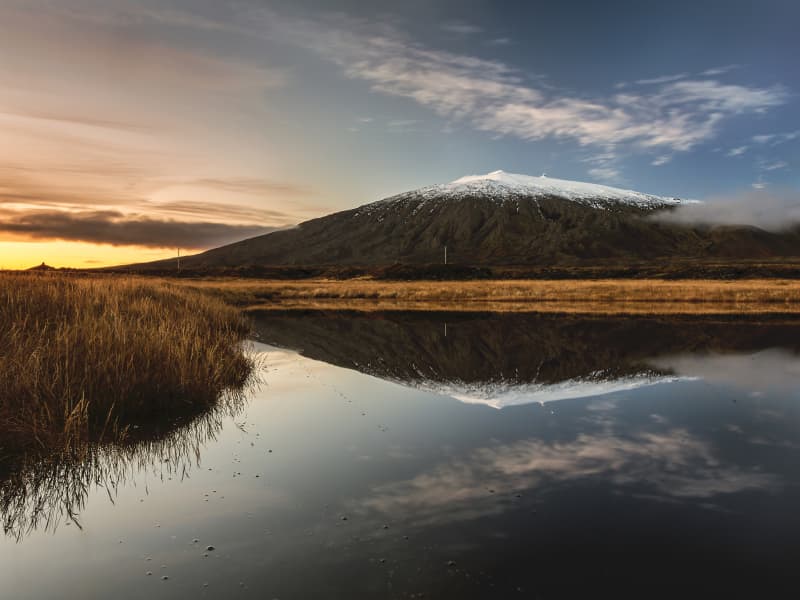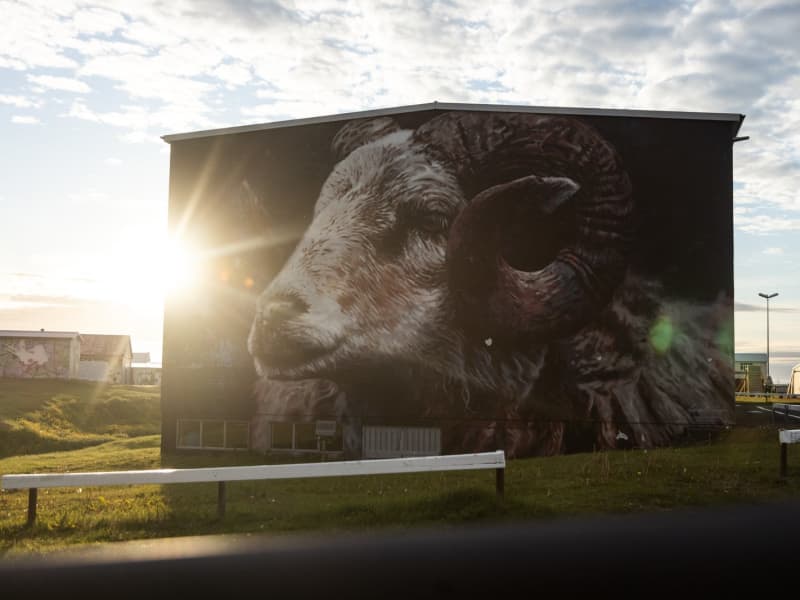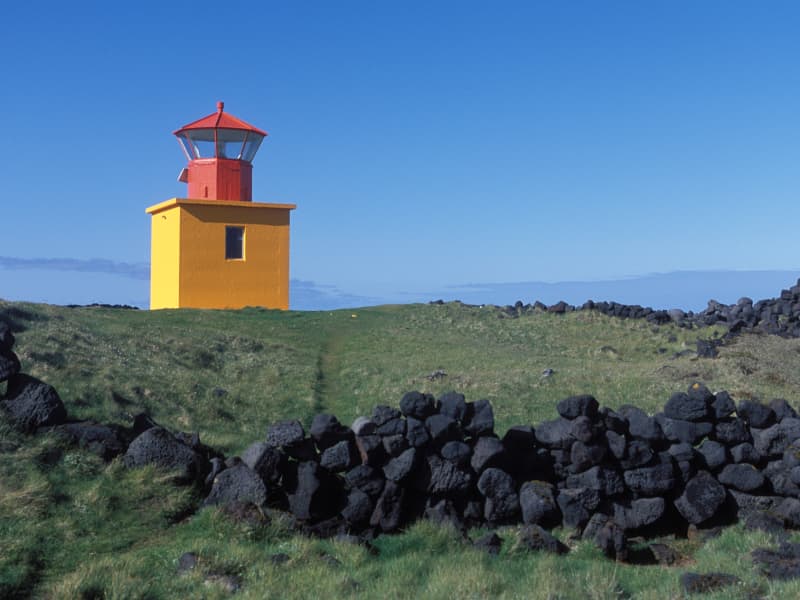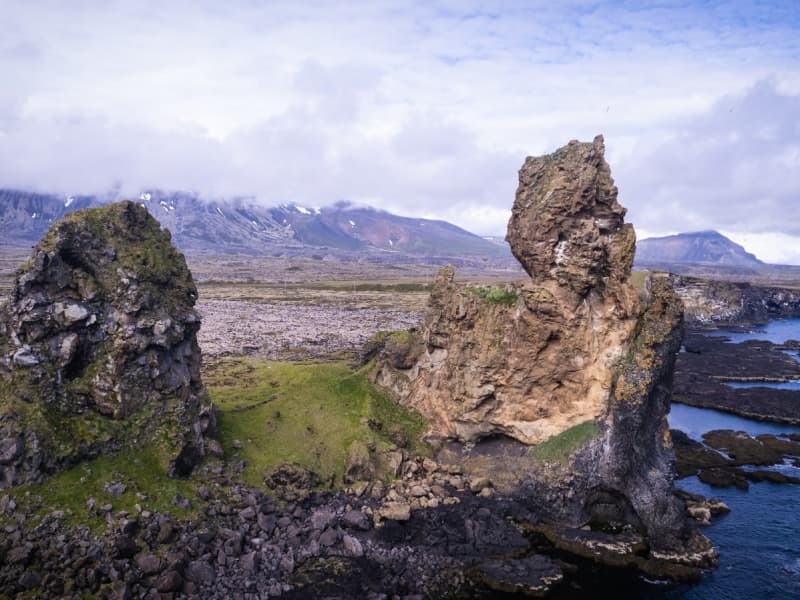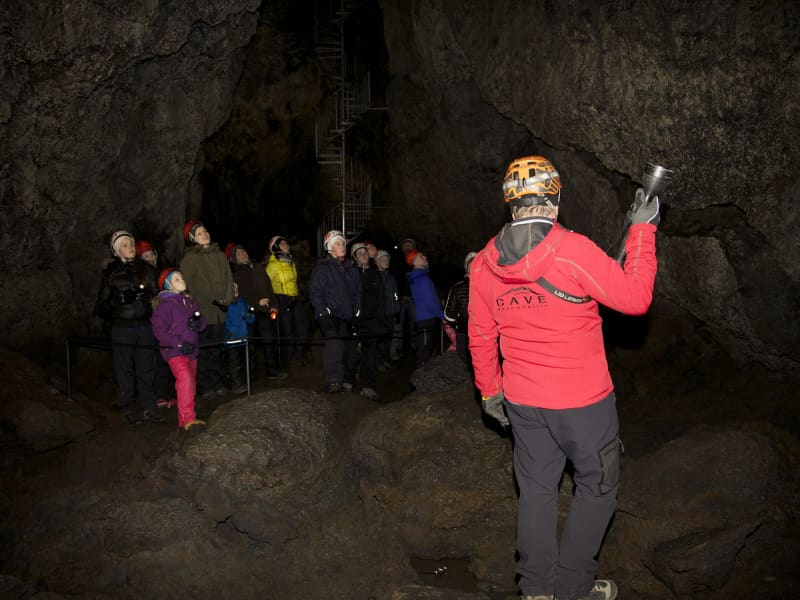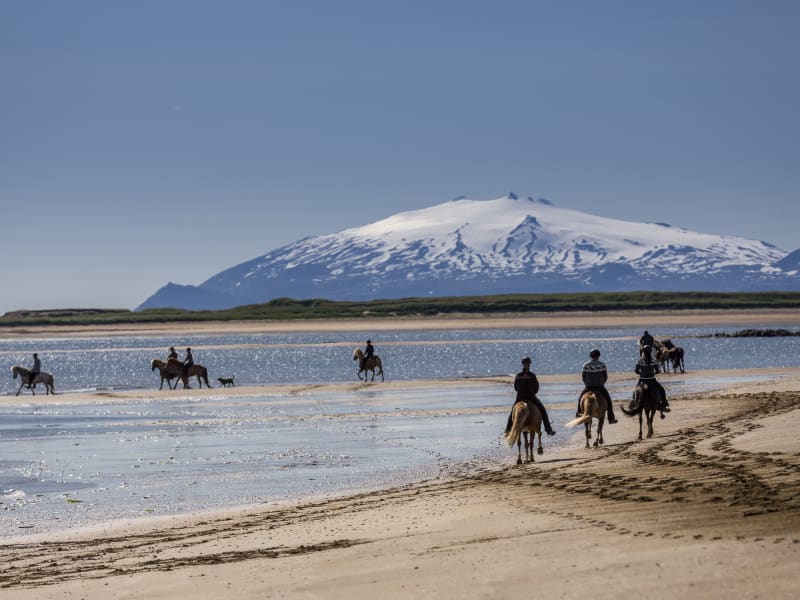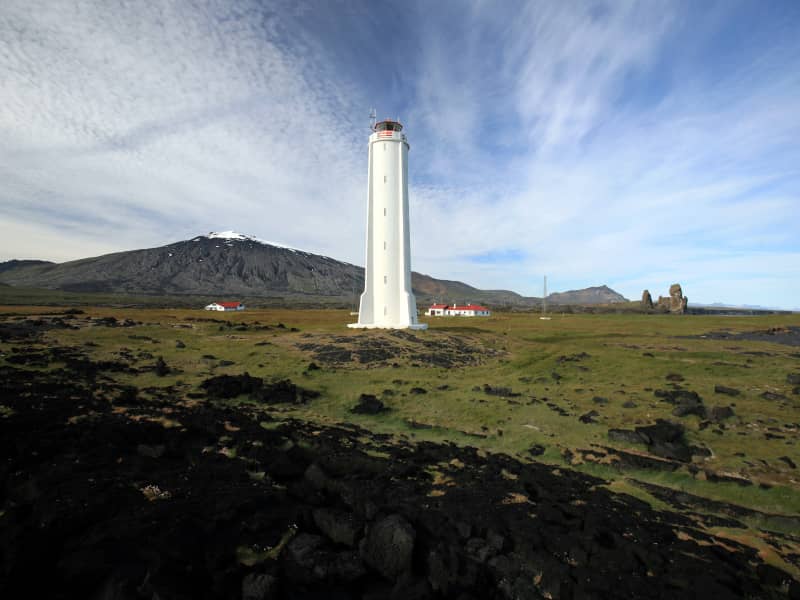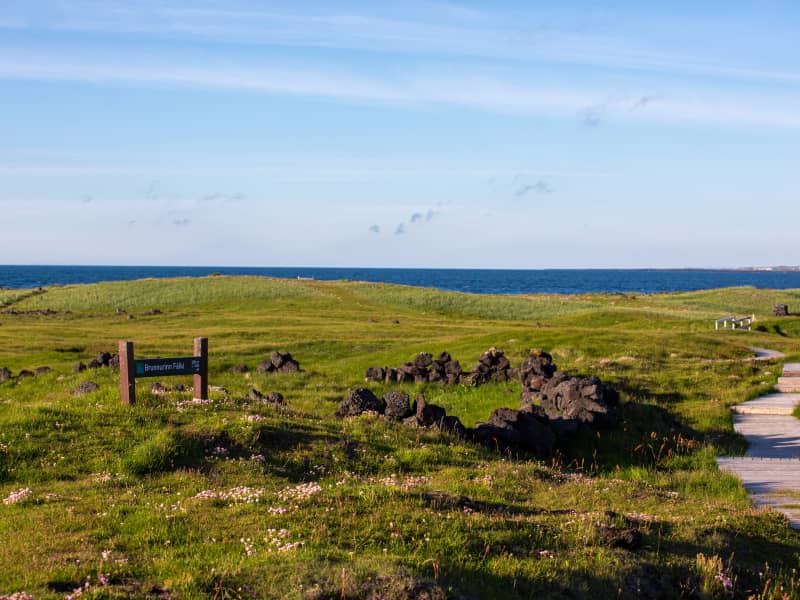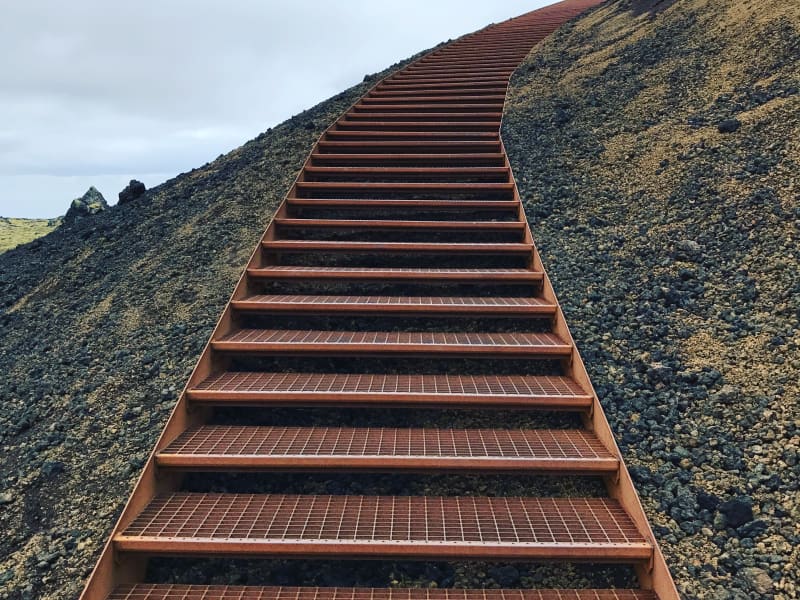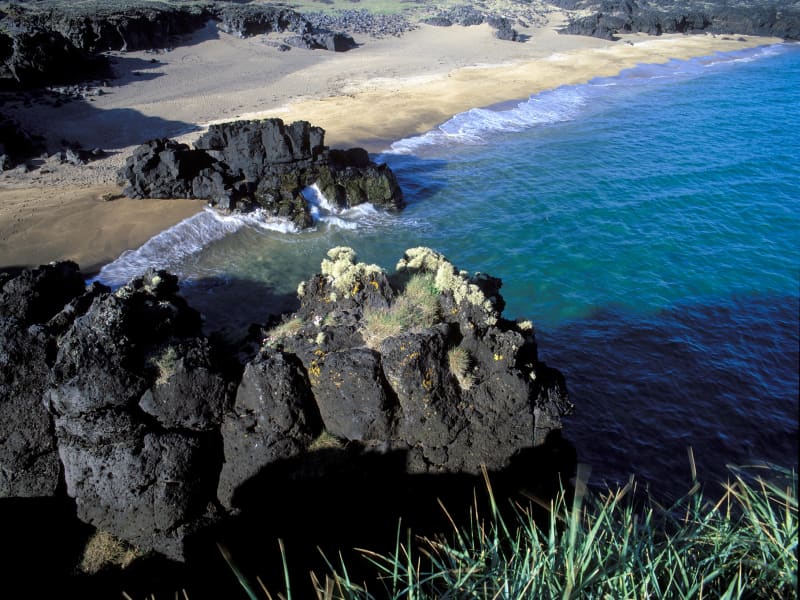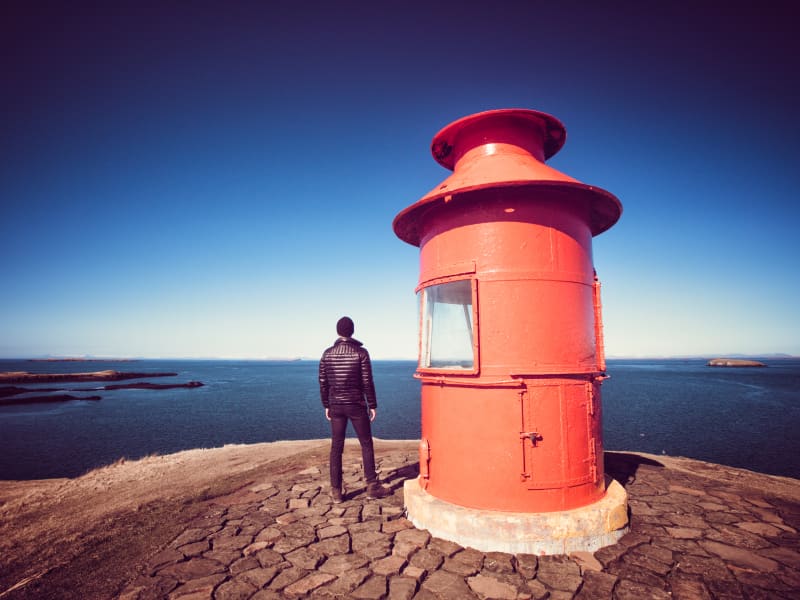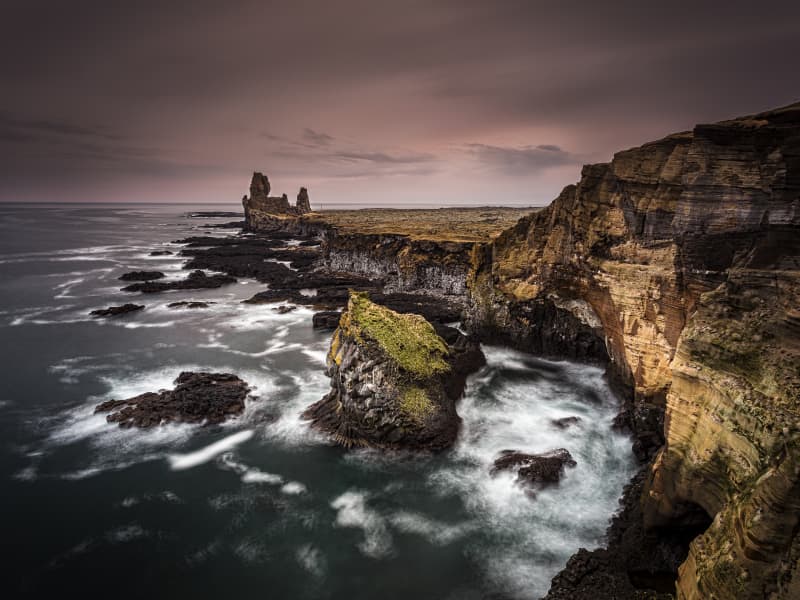Helgafell Holy Mountain
Helgafell – A Sacred Mountain Through the Ages
Climb Helgafell in silence – where folklore, faith and a breathtaking view come together in a moment that stays with you.
Just south of Stykkishólmur rises Helgafell – a low hill in height, but towering in the story of a nation. Though it stands only 73 metres tall, the mountain dominates the landscape around it, alone and distinct. Since the earliest days of settlement, Helgafell has been deeply intertwined with the spiritual life of Icelanders, and remains to this day one of the most sacred natural landmarks in West Iceland.
The settler Þórólfur Mostrarskegg claimed this land and named it Þórsnes. According to the Sagas, he dedicated the mountain to his god Þór (Thor) in the Old Norse tradition. At the base of the mountain, he built a temple to Þór, and here was also held the regional assembly of the Westfjords – known as Þórsnesþing. This ancient connection still lives on in the cultural spirit of the area – for instance, in the coat of arms of the town of Stykkishólmur, where Mjölnir, the hammer of Thor, serves as a symbol of protection and identity.
Helgafell is also linked to one of the strongest female figures in the Icelandic Sagas: Guðrún Ósvífursdóttir from Laxdæla saga. She lived at Helgafell in her later years, and legend has it that she is buried there.
Following the Christianization of Iceland, a monastery was founded at Helgafell – a centre of learning and literature, where many books were written. Today there is a church on the site, which also served as a rectory for centuries. Helgafell has thus remained a symbol of faith and continuity – from pagan roots to Christian heritage – across Icelandic history.
A local folk belief says that if you climb the mountain in silence, without speaking or looking back, you may make three wishes at the top – so long as they are made with a pure heart and kept secret.
Today, a marked walking path leads from a small car park at the base to the summit. At the top, a viewing dial offers wide-ranging views: over Helgafellssveit, Þórsnes, Breiðafjörður Bay, the Snæfellsnes mountain range, and the distant highlands of the southern Westfjords and Dalir region. The walk is short, but the experience and views are powerful and captivating.
Respect the sacredness of the site. Walk gently, speak no word – and wish with your heart.

